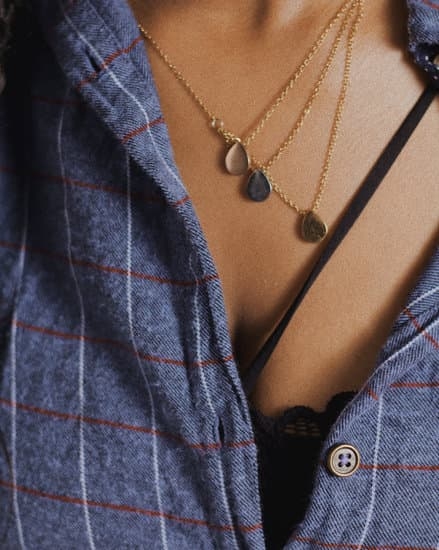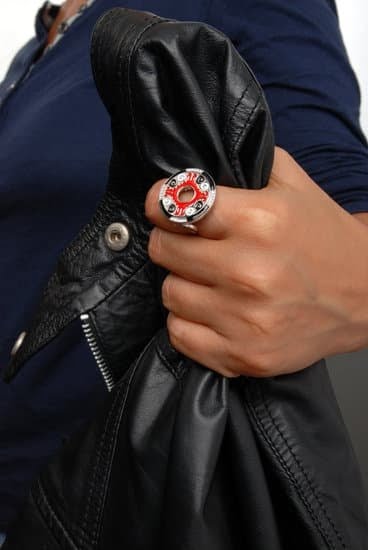In a world of mass-produced products, personalized and custom-made jewelry has become increasingly popular. The unique nature of these pieces allows individuals to express their personal style and create meaningful jewelry that resonates with them. However, in order to add a professional touch to these handcrafted treasures, jewelry tags play a crucial role.
Jewelry tags serve multiple purposes beyond just labeling the type of metal or gemstone used. They are essential for branding and marketing purposes, as they provide important information about the designer or brand behind the piece. Additionally, they help ensure the quality and authenticity of handmade jewelry, giving customers confidence in their purchase.
When it comes to creating your own custom jewelry tags, you have two options: DIY or ready-made. Each option has its advantages and disadvantages. While pre-made tags offer convenience and consistency, making your own tags allows for greater customization and personalization. Factors such as cost, customization options, and time investment should be considered when deciding which route to take.
In this article, we will explore the significance of jewelry tags in more detail and discuss the advantages and disadvantages of both DIY and ready-made options. We will also provide a comprehensive list of materials and tools needed for creating custom jewelry tags at home. Whether you’re new to jewelry-making or a seasoned pro, this article will guide you through the process step-by-step while providing design inspirations, expert tips, troubleshooting advice, and creative finishing techniques”.
The significance of jewelry tags
The significance of jewelry tags in the world of handmade jewelry cannot be underestimated. These small pieces of identification not only add a professional touch to your creations but also play a crucial role in branding, marketing, and ensuring the quality and authenticity of your work.
First and foremost, jewelry tags are essential for branding purposes. By including your logo or brand name on the tags, you create a consistent and recognizable visual identity that helps customers associate your jewelry with your brand. This is especially important if you sell your pieces online or through third-party retailers, as it allows customers to easily find and recognize your work.
In addition to branding, jewelry tags are also valuable for marketing purposes. Whether you participate in craft shows, consignment shops, or online platforms, tags provide an opportunity to share relevant information about your business with potential customers. You can include details such as contact information, social media handles, website URL, or even a QR code that leads directly to your online store. This enables interested buyers to easily reach out to you for inquiries or future purchases.
Furthermore, jewelry tags serve as a mark of quality and authenticity for handmade jewelry. By including details such as metal purity, gemstone type or carat weight (if applicable), and any special care instructions, you assure buyers that they are purchasing a genuine piece made with passion and skill. This transparency builds trust and credibility between you and your customers.
| Benefits | Description |
|---|---|
| Branding | Create a consistent visual identity associated with your brand. |
| Marketing | Share relevant information about your business with potential customers. |
| Quality Assurance | Ensure customers that they are buying a genuine, handmade piece. |
DIY vs. ready-made tags
Creating custom jewelry tags for your handmade creations can add a unique and professional touch to your pieces. When it comes to choosing between DIY tags and ready-made ones, there are several factors to consider, including cost, customization options, and time investment. Let’s examine the advantages and disadvantages of each option.
Advantages of DIY jewelry tags
1. Cost-effective: One of the biggest advantages of creating your own custom jewelry tags is the cost savings. DIY tags often require minimal materials, which can be more affordable compared to purchasing pre-made ones.
2. Unlimited customization: DIY tags allow you complete control over the design and customization options. You can select the shape, size, color, font, and any additional embellishments you desire. This level of personalization helps in branding your jewelry and making it stand out from others.
3. Flexibility in quantity: When making your own tags, you have the flexibility to create as many or as few as you need at any given time. Whether you’re producing a large batch of jewelry for an event or just creating a few unique pieces for a special occasion, you can adjust your tag production accordingly.
Disadvantages of DIY jewelry tags
1. Time-consuming: Creating custom jewelry tags requires time and effort. From designing to cutting, stamping or engraving, and attaching them to the jewelry pieces, each step demands attention and precision. If time is limited or if you prefer focusing solely on the creative process of making jewelry, purchasing pre-made tags may be a better choice.
2. Skill requirements: Making your own custom jewelry tags might require certain skills or knowledge with specific tools or techniques such as cutting metal or engraving. Beginners may need to invest extra time in learning these skills before achieving desired results.
Advantages of ready-made jewelry tags
1. Convenience: Ready-made jewelry tags are already designed, cut, and often come with pre-attached strings or loops for easy attachment. This convenience saves time that can be dedicated to the actual jewelry-making process.
2. Consistency: Purchasing pre-made tags ensures a consistent look and quality across your jewelry pieces. If you’re looking for a standardized branding approach, ready-made tags can provide that consistency.
Disadvantages of ready-made jewelry tags
1. Limited customization: Ready-made tags may offer limited options for customization compared to DIY tags. You may be restricted to choosing from a selection of predetermined shapes, sizes, colors, fonts, and materials.
2. Higher cost: While ready-made tags offer convenience and consistency, they generally come at a higher cost compared to creating custom jewelry tags yourself.
By weighing the advantages and disadvantages of both DIY and ready-made jewelry tags, you can make an informed decision based on your priorities and preferences. Whether you choose to create your own unique tags or opt for the convenience of pre-made ones, finding the perfect finishing touch for your handmade jewelry will undoubtedly add value to each piece.
Materials and tools needed
When it comes to creating custom jewelry tags, having the right materials and tools is essential. Whether you are a beginner or an experienced jewelry maker, there are options available for every budget and skill level. Here is a comprehensive list of materials and tools you’ll need to get started on your DIY custom jewelry tags.
1. Tags: The first item on your list is the actual tag itself. There are various options to choose from, such as metal tags, wooden tags, or even paper tags. Consider the style and aesthetic of your jewelry when selecting the appropriate material for your tags.
2. Cutting Tools: Depending on the material you choose for your tags, you may need different cutting tools. For metal tags, a jeweler’s saw or metal snips will be necessary. If you opt for wooden tags, a coping saw or scroll saw might be more suitable. Paper tags can easily be cut using scissors or a craft knife.
3. Stamps/Engraving Tools: Personalization is key when it comes to custom jewelry tags. To add names or initials to your tags, invest in stamping letters or number sets that are compatible with the material you are working with. Alternatively, engraving tools can provide a more refined and permanent customization option.
4. Hole Puncher: A hole puncher is crucial for attaching your custom jewelry tag to your piece of jewelry. Consider the size of the hole puncher based on the type of material and thickness of the tag.
5. Embellishments: Adding embellishments can enhance the overall look of your custom jewelry tags. This could include beads, rhinestones, small charms, or even additional pieces of wire or chain.
6. Adhesives: Depending on the type of embellishments you choose to use, you may need adhesive to secure them onto your tag properly.
7. Finishing Materials: To give your custom jewelry tags a polished and professional appearance, consider using finishing materials such as sealants, varnishes, or paints that are appropriate for the material you are working with.
Remember, this is just a basic list of materials and tools to get started with your DIY custom jewelry tags. Your personal preferences and the nature of your jewelry designs may require additional items. Search online or visit your local craft store to find a wide array of options and variations to suit your budget and creative vision.
By having all the necessary materials and tools at hand, you can enjoy the process of creating unique jewelry tags that reflect your brand aesthetic while giving your handmade pieces a professional touch.
Design inspiration
Design Inspiration for Unique and Eye-Catching Jewelry Tags
When it comes to creating custom jewelry tags, the design plays a crucial role in making them unique and eye-catching. The design of the tag not only reflects the brand and style of the jewelry but also captures the attention of potential customers. In this section, we will showcase a variety of design ideas and inspirations to help you create stunning and personalized jewelry tags.
Shapes
One way to make your jewelry tags stand out is by using unconventional shapes. Instead of sticking to traditional rectangular or oval tags, consider experimenting with different shapes such as hearts, stars, flowers, or even abstract shapes that relate to your brand or jewelry theme. These unique shapes will add visual interest and give your jewelry a distinct look.
Patterns
Adding patterns to your custom jewelry tags can be a great way to make them visually appealing. Consider using delicate floral patterns for feminine and delicate pieces, geometric patterns for contemporary designs, or vintage-inspired patterns for retro-style jewelry. You can create these patterns using stamps or stencils or explore digital printing options for more intricate designs.
Fonts
The font you choose for your custom jewelry tags can greatly impact how they are perceived. Consider using hand-lettered fonts for a whimsical touch, elegant script fonts for sophisticated pieces, or bold and modern fonts for statement jewelry. It’s important to ensure that the chosen font is easily readable while still aligning with your brand aesthetic.
Embellishments
Embellishing your custom jewelry tags can elevate their appeal even further. Consider adding small gemstones or beads that match the colors of your jewelry pieces, embossing details with metallic foils for a luxurious touch, or incorporating unique textures such as leather or fabric. These embellishments will add dimension and tactile interest to your tags.
Remember that the design of your custom jewelry tags should align with your brand identity and target audience. It’s also important to create a cohesive look with your jewelry pieces, ensuring that the tags complement and enhance the overall aesthetic. By exploring different shapes, patterns, fonts, and embellishments, you can create unique and eye-catching jewelry tags that will leave a lasting impression on customers.
In the next section, we will walk you through a step-by-step tutorial on how to make your own custom jewelry tags, from choosing the design to attaching them to your jewelry pieces. Stay tuned for more inspiration and guidance.
Step-by-step tutorial
Now that you have all the necessary materials and tools, it’s time to dive into the step-by-step process of creating your own custom jewelry tags. This tutorial will guide you through each stage, from choosing the design to attaching the tags to your jewelry pieces.
Step 1: Choose the design
Start by deciding on the design for your jewelry tags. Consider factors such as your artistic style, brand identity, and target audience. You can opt for a simple and minimalistic design or get creative with intricate patterns and shapes. Experiment with different fonts and symbols to add a unique touch to your tags.
Step 2: Cut the tags
Once you have finalized your design, it’s time to cut out the tags. Use a metal cutting tool or scissors to carefully cut out the desired shape from your chosen material. Whether you prefer rectangular, circular, or custom-shaped tags, ensure they are sized appropriately to fit comfortably on your jewelry pieces.
Step 3: Stamp or engrave the tags
Now comes the fun part – stamping or engraving your customized designs onto the tags. If you’re using metal tags, you can use metal stamps coupled with a hammer to create indentations that form letters, numbers, symbols, or patterns. For other materials like leather or wood, engraving tools work best to achieve precise and detailed designs.
Step 4: Attach the tags
After completing the stamping or engraving process, it’s time to attach your custom jewelry tags to your pieces. Depending on your preference and the material of both the tag and jewelry item, there are various attachment options available. You can use jump rings for pierced items such as earrings or necklaces and clasps for bracelets. For non-pierced items like brooches or pins, consider using adhesive backing or sewing on fabric-based pieces.
Remember that practice makes perfect when it comes to creating custom jewelry tags. Don’t be discouraged if your first attempts don’t turn out as expected – keep refining your techniques and experimenting with different designs until you achieve the desired outcomes.
Tips and tricks
To help readers achieve professional results with their DIY custom jewelry tags, there are several tips and tricks that can be shared. These suggestions will assist in troubleshooting common issues, exploring advanced techniques, and experimenting with different finishing options.
One common issue that DIYers may encounter is smudging or uneven stamping on their jewelry tags. To avoid this problem, it is important to ensure that the stamping surface is clean and flat. Placing a piece of cardboard or rubber mat underneath the tag can help provide a more stable surface for stamping. Additionally, using a steady hand and applying even pressure when stamping can help create clean and crisp impressions.
For those looking to take their custom jewelry tags to the next level, exploring advanced techniques such as metal etching or laser engraving can add an extra element of customization. Metal etching involves using chemicals to create designs on metal surfaces. Beginners should exercise caution when working with chemicals and always follow safety guidelines. Laser engraving, on the other hand, requires specialized equipment but can produce intricate and precise designs on a variety of materials.
In terms of finishing options for jewelry tags, there are numerous possibilities to explore. One option is to use patina solutions or oxidation agents to add depth and contrast to the stamped design. This technique works particularly well with silver or copper tags. Another option is to experiment with different types of coatings such as sealants or clear resin to protect the tag from tarnishing or scratching over time.
By implementing these tips and tricks, DIY enthusiasts can achieve professional-looking custom jewelry tags that enhance the overall aesthetic of their handmade creations. Experimentation and creativity are key in discovering new techniques and finishes that best suit individual styles and preferences. Don’t be afraid to try different methods and share your experiences with others in the DIY jewelry-making community.
Showcasing the results
After putting in the time and effort to create your own custom jewelry tags, it’s time to show off your hard work. Sharing your finished tags not only allows you to proudly display your creations, but it also serves as an opportunity to inspire others and contribute to the thriving DIY jewelry-making community.
One of the best ways to showcase your custom jewelry tags is through social media platforms such as Instagram, Facebook, and Pinterest. These platforms offer a visual-centric space where you can share high-quality photos of your handmade tags. Use hashtags relevant to jewelry-making or crafting to reach a wider audience. Engage with other creators by liking and commenting on their work, building connections and fostering a supportive network within the DIY community.
In addition to social media, there are numerous online communities dedicated specifically to DIY jewelry-making. These communities provide a space for enthusiasts to connect, learn from each other, and share their latest creations. Participate in forums, post photos of your custom jewelry tags, and engage in discussions with fellow makers. Not only will you receive feedback and encouragement, but you may also gather new ideas and techniques from others.
By sharing your custom jewelry tag designs, you contribute to the overall creativity within the DIY community. Your unique style and ideas can serve as inspiration for other makers who are looking for fresh concepts or struggling with design choices. Remember that everyone starts somewhere, so even if you feel like a beginner in this craft, don’t hesitate to showcase your work-it may spark someone else’s creativity.
Conclusion
In conclusion, DIY custom jewelry tags offer numerous benefits for jewelry makers looking to add a professional touch to their creations. As discussed throughout this article, these tags play a crucial role in branding, marketing, and ensuring the quality and authenticity of handmade jewelry. By creating their own tags, jewelry makers have the opportunity to customize every aspect of the design, from shape to font to embellishments.
While there are advantages to purchasing pre-made tags such as convenience and time savings, the DIY approach allows for more creative freedom and cost savings in the long run. With a comprehensive list of materials and tools provided in this article, readers can easily gather everything they need to start making their own custom jewelry tags. Whether they are working on a tight budget or possess varying skill levels, there are options available to suit every individual.
Furthermore, this article has provided design inspiration as well as step-by-step guidance on how to create custom jewelry tags. Expert tips and tricks have been shared to help readers troubleshoot common issues and achieve professional results with their homemade tags. By joining social media or community platforms, readers can showcase their finished creations and inspire others in the DIY jewelry-making community.
In sum, DIY custom jewelry tags offer endless possibilities for personalization and creativity. They not only enhance the branding and marketing efforts of jewelry makers but also add value and professionalism to their creations. With the information provided in this article, readers are motivated to try their hand at making unique tags for their handmade jewelry pieces. So why not give it a go? Start experimenting today and see how your customized tags can elevate your handmade jewelry designs.

Welcome to my jewelry blog! My name is Sarah and I am the owner of this blog.
I love making jewelry and sharing my creations with others.
So whether you’re someone who loves wearing jewelry yourself or simply enjoys learning about it, be sure to check out my blog for insightful posts on everything related to this exciting topic!





